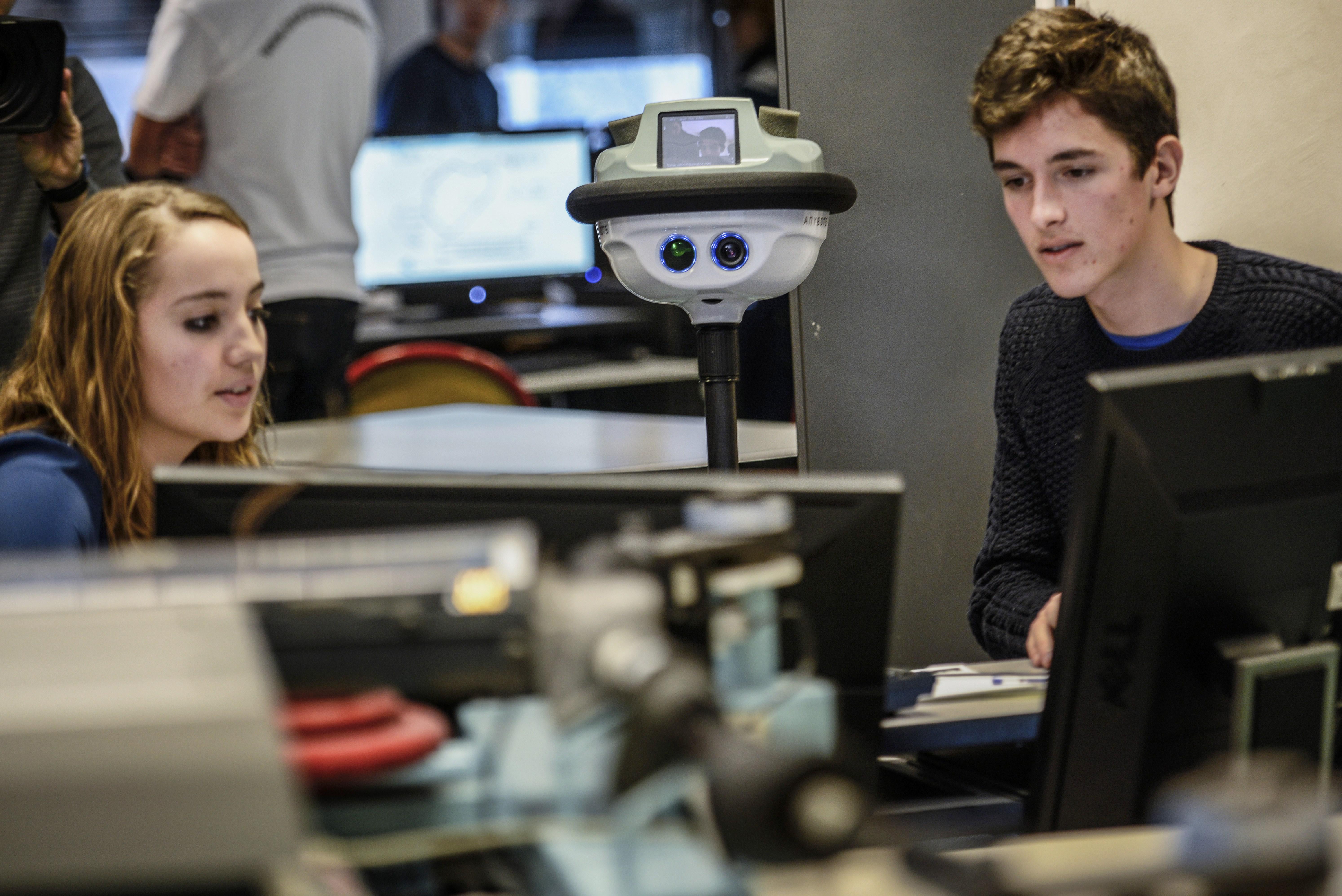The New York Times has outdone itself, publishing a trend piece that declares, two paragraphs in, that it is not a trend piece. The phenomenon described—robots at weddings—may not exactly be sweeping the nation. But we are to believe it is inching, irrevocably, into the realm of the possible, just as robots are quietly infiltrating our lives to the point where we may all soon fall in love with our operating systems and meditate poetically in the snow about the empty spaces that lie between bodies. (Or perhaps we will be forced underground to avoid getting harvested for our energy. One of the two!)
Anyway, take this article as a “You are here” sign on our technological slippery slope: Several couples have invented, hired, or otherwise recruited robots into their wedding ceremonies. According to writer Ashley Hoffman, some of the bots function as helpful placeholders—eyes and ears for loved ones who can’t be physically present. For instance, for $325, you can rent an Anybots machine (“a flying-saucer-type contraption attached to a pole and two wheels and containing, among other things, two cameras”) to zip around capturing footage for remote observers. This seems logical, handy, and not all that unusual in the age of Skype.
But other robots actually play a role in the marriage rites. Wisconsinites Mark Martin and Sarah Kriha used a tuxedo-clad cyborg as their ring bearer. The little device’s next iteration, Hoffman tells us, may feature a “confetti cannon mounted on the head, a video camera on board and a voice chip so the robot can talk.” (Adorable! Until it starts hitting on the bridesmaids.) And I love this description of the wedding of two California residents, Neva Reese and Moe McLendon:
It was a robot named Father Emiglio, with flashing red light bulbs for eyes, that posed a tough question to the bride, while the gathered guests howled. “Neva, do you promise to coordinate your functions in cooperation in sickness and in health?” it asked Ms. Reese, now 33, as she was about to marry Mr. McLendon, now 37.
Then Father Emiglio sputtered and said, “Please vocalize your agreement,” before passing the proceedings on to Eric Sherman, a minister ordained by the Church of Scientology. Mr. Sherman rambled on about philosophy, but Father Emiglio was programmed to interrupt: “Stop. Stop. Enough. Nonrelevant.”
In case you were wondering, Father Emiglio is an Italian toy festooned with “Lego blocks, vacuum tubes and antennas.” His nose is a Y-wing starfighter, and he has muttonchops made of ribbon cables. What’s wonderful about his officiating is the sly way it sends up the mechanized impersonality of the vows. (Doesn’t the whole “in sickness AND in health” line sound like a Boolean search?) I don’t see a huge difference between being married by a justice of the peace you’ve never met and being prompted to say “I do” by a robot—except that with Father Emiglio, Reese and McLendon can poke fun at a time-honored ceremony even as they bend it to their purposes.
Patricia Arend, a sociology professor at Massachusetts’ Fitchburg State University, told Hoffman that robotic weddings are “a way of saying we’re unique and different and we’re carving ourselves out from all those other people doing the same thing over and over again.” Admittedly, that kind of impulse often leads nowhere good. And it’s a little strange that programmed robots are being used to facilitate human individuality. But little machines fashioned from “aluminum sheets and foam board” seem cute and unpretentious, like tying the knot in a Pixar movie. Plus, they are a source of conversational fodder for when some distant relative or high-school nemesis has you backed into a corner. And if you get seated at the robot table? More food for you.
